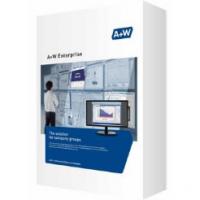
Date: 12 June 2020
Temperatures in the atmosphere and the ocean´s are rising steadily. The main culprit, since the beginning of industrialization, is mankind, in particular through greenhouse gas emissions. That is a scientific fact, quoted by Munich Re on its website.
Natural disasters such as floods, hurricanes, storms and droughts will be the “weather” of the future, unless we succeed in bringing down global warming to well below an increase of 2°C compared with pre-industrial levels. This was precisely the goal identified by the UN´s Paris Climate Agreement in 2015. In order to achieve this, the building sector is changing, and sustainable and energy-efficient building is in the forefront.
Energy-efficient building—a driver of future developments
 Over the last 20 years, the building sector has introduced many innovations in energy-efficient planning and construction, but it is still regarded as one of the biggest consumers of energy. 14% of all CO2 emissions in Germany are said to come from the building sector.
Over the last 20 years, the building sector has introduced many innovations in energy-efficient planning and construction, but it is still regarded as one of the biggest consumers of energy. 14% of all CO2 emissions in Germany are said to come from the building sector.
Much more still has to be done, on the hand to stabilize or reduce how much energy buildings consume, and on the other to introduce measures for making buildings more resilient so as to avoid significant damage to property through extreme weather. Climate change is having a direct impact on the building sector.
You can look forward to lots of exhibitors and a wide-ranging supporting program:
- How climate change is impacting the building sector and shaping other branches of industry
- Energy-efficient building as a driver of the future
- Improving the resilience of buildings—a key pillar in the construction industry
Come and visit our exhibitors, and learn more about how climate change is impacting the building sector. In the supporting program at BAU you can choose from many specialist lectures from industry experts. And the special shows offer deep insights into selected themes.
Tackling climate change through energy-efficiency
Planning now doesn´t just focus on the individual building but on the building in its particular context. They have to operate together, as an energy-efficient district. Any energy surplus in one district can then be shared with a neighboring district where there is a deficit. In addition, stored energy should be made available for use in e-mobility offers. All this is part of energy-efficient building.
But that´s not all! The choice of materials also plays a big part in view of the high level of consumption of natural resources. Architects, planners and processors must bear even more responsibility for the environment, in terms of choosing new types of structures and materials made from regenerative and recyclable resources in a functional, aesthetic and ecologically sensible way. In architectural design, the new has always been a welcome source of inspiration. Find out more about how climate change is impacting the building sector—Get your ticket for BAU online from September 2020!
 600450
600450

















Add new comment